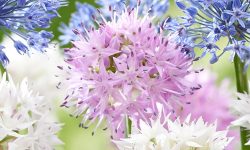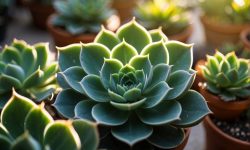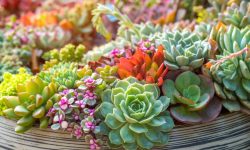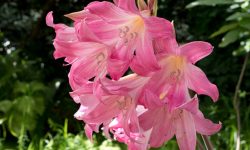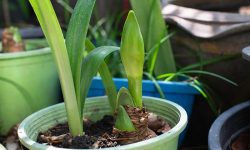Few flowers capture the heart quite like poppies. With their delicate, paper-thin petals fluttering in the breeze and colors that seem to glow in the sunlight, poppies bring a sense of poetry and freedom to any spring garden. They bloom like memories—soft, fleeting, and unforgettable—turning an ordinary patch of earth into something magical.
Planting poppy seeds is not just a gardening task; it’s an invitation to beauty, resilience, and nature’s quiet drama. From a sprinkle of tiny seeds can rise a garden filled with life, color, and movement—welcoming bees, butterflies, and moments of wonder each time you pass by.
Understanding Poppy Types Before Planting
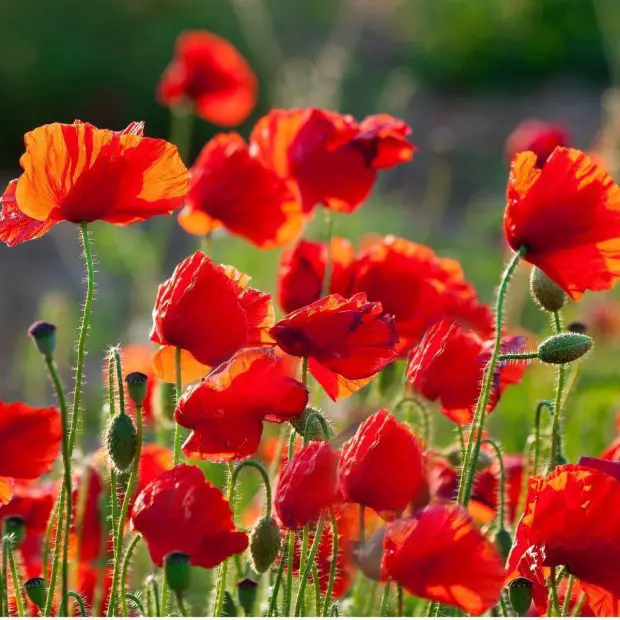
Understanding the different types of poppies is key to creating a garden that matches your vision and climate. Each variety brings unique beauty, bloom time, and growing requirements. Before planting, it’s important to choose the type that best suits your needs.
Annual poppies, such as the Shirley poppy (Papaver rhoeas) and California poppy (Eschscholzia californica), complete their life cycle in one season. These are ideal for quick bursts of color in spring and early summer, especially in wildflower-style gardens. They’re easy to grow from seed and often reseed themselves if allowed to go to seed.
Perennial poppies, like the Oriental poppy (Papaver orientale), offer long-term beauty but usually bloom in late spring or early summer and go dormant afterward. These are best planted in permanent garden beds where they won’t be disturbed, as they dislike being moved once established.
Iceland poppies (Papaver nudicaule) are technically short-lived perennials but are often grown as cool-season annuals in warmer zones. Their pastel colors and long blooming period make them favorites in cottage gardens and floral displays.
Understanding the growth habit, bloom time, and climate preference of each poppy type ensures you get the long-lasting, vibrant show you envision when those first petals begin to unfurl.
Choosing the Right Time to Plant Poppy Seeds
Timing is crucial when it comes to planting poppy seeds for a successful bloom. These flowers thrive when given a natural cold period that mimics winter dormancy, helping to trigger strong germination and robust early growth.
For most climates, the best time to plant poppy seeds is in late fall or early winter, just before the ground freezes. This allows the seeds to undergo a natural cold stratification period over the winter months. As temperatures warm in early spring, the seeds will begin to germinate at the optimal time.
In regions with mild winters, such as USDA Zones 8 through 10, poppy seeds can also be planted in late winter or very early spring, ideally four to six weeks before your region’s last expected frost date. The seeds prefer cool soil and will struggle in the heat, so planting too late in spring can hinder germination and reduce flowering.
If you’re growing poppies indoors for transplanting, start the seeds in biodegradable pots 6 to 8 weeks before the last frost, but remember that poppies dislike root disturbance. Transplant them carefully, and only when absolutely necessary, to avoid damaging the taproot.
Matching your planting time with your local climate ensures stronger seedlings, healthier plants, and a garden filled with graceful blooms at just the right moment in spring.
Preparing Your Garden for Poppy Seeds
Proper preparation of your garden is essential to ensure the successful germination and growth of poppy seeds. These delicate seeds thrive in conditions that replicate their native environments—sunny, open spaces with well-draining soil. To get the most vibrant and long-lasting display, start by choosing a spot in your garden that receives at least 6 hours of full sunlight daily. Avoid shaded areas or spaces near large trees where competition for light and nutrients could hinder seed development.
Soil quality plays a crucial role in how well your poppies will perform. Poppies prefer neutral to slightly alkaline soil with good drainage. If your soil is heavy clay or retains water, amend it with coarse sand, compost, or fine gravel to improve texture and drainage. You can also raise the beds slightly to encourage excess water to flow away from the root zone. Conduct a simple soil test to check pH levels and add lime if your soil is too acidic.
Before sowing, clear the planting area of weeds, debris, and old plant material. Weeds not only compete for moisture and nutrients but can also overshadow emerging seedlings. Rake the soil to a fine tilth, breaking up any clumps and smoothing the surface. This creates ideal conditions for surface sowing, as poppy seeds require light to germinate and should not be buried deeply.
Avoid fertilizing the soil heavily before planting. Excessive nutrients, especially nitrogen, can lead to abundant foliage but fewer flowers. If your soil is poor, you can mix in a modest amount of well-rotted compost or apply a diluted balanced fertilizer, but keep it minimal. The goal is to create a lean growing environment that encourages blooming rather than leafy growth.
If you’re planting in a region prone to spring rains or late frosts, consider preparing multiple sowing areas to stagger your planting and maximize success. You can also use row covers to protect early sowings from frost while still allowing light and moisture to reach the seeds. With careful planning and soil preparation, your garden will be ready to host a thriving population of poppies that will brighten your spring with color and charm.
How to Sow Poppy Seeds Successfully
Sowing poppy seeds may seem simple, but a few key techniques can make a big difference in your success. Because poppy seeds are tiny and require light to germinate, they should never be buried deep in the soil. Instead, scatter them thinly across the surface of well-prepared soil and gently press them down with your hand or a board to ensure good contact without covering them.
To distribute the seeds evenly and avoid overcrowding, you can mix them with sand before scattering. This ensures more even spacing and better airflow between seedlings later on. Water the area gently with a fine mist to moisten the surface without washing the seeds away. Avoid using a strong stream of water, which could displace the seeds.
Poppies need cool temperatures to germinate, usually between 50 to 60°F (10 to 16°C). In most regions, fall or early spring sowing is ideal. Keep the soil consistently moist during germination, which usually takes 10 to 20 days depending on conditions. Once seedlings emerge, thin them out so that the remaining plants have room to grow strong and healthy.
Proper sowing sets the stage for a vibrant and full bloom in spring, so attention to these early steps is key to growing healthy, resilient poppies.
Ensuring Proper Germination
Getting poppy seeds to germinate successfully depends on replicating their preferred natural conditions. These seeds require light to germinate, so they should not be buried in soil. Instead, after scattering them, gently press the seeds into the surface to ensure good soil contact while keeping them exposed to sunlight. Avoid covering them with mulch or compost.
Soil moisture is another critical factor. Keep the top layer of soil consistently moist but not waterlogged. Use a fine mist to water the seeds to avoid displacing them. Germination typically takes 7 to 28 days, depending on temperature and variety. Optimal soil temperatures for germination are between 50°F and 60°F (10°C to 15°C).
Minimize disturbance during this period. Avoid walking over seeded areas and protect them from heavy rains or strong winds that can wash away the seeds. Once germinated, thin the seedlings to prevent overcrowding, which can hinder growth and bloom development. With the right care and patience, you’ll see healthy seedlings emerge and thrive.
Caring for Young Poppies
Once your poppy seeds have germinated and delicate seedlings begin to appear, providing consistent care is essential to help them grow into strong, healthy flowering plants. Young poppies are particularly sensitive to changes in moisture and temperature, so your attention during the early stages can make all the difference.
Water the seedlings gently but consistently, keeping the soil slightly moist without allowing it to become soggy. Overwatering can lead to damping-off disease, a common problem that causes seedlings to collapse. Water early in the day to give the surface time to dry before evening.
Thin out the seedlings once they develop their first true leaves, allowing sufficient space between each plant to promote good airflow and reduce competition for nutrients. Crowded poppies are more prone to fungal diseases and stunted growth. Depending on the variety, aim for a spacing of 6 to 12 inches.
Weed the area carefully by hand to avoid disturbing young roots. Avoid using herbicides around seedlings. Applying a thin layer of mulch, such as shredded bark or fine compost, can help suppress weeds and conserve soil moisture without smothering the delicate plants.
If pests like aphids or slugs become a problem, use organic methods such as neem oil or diatomaceous earth to control them. Inspect plants regularly so you can act quickly if signs of damage appear.
Most importantly, avoid fertilizing too early. Excess nitrogen can encourage lush foliage at the expense of flowers. If needed, wait until the plants are several inches tall and established before applying a diluted, balanced fertilizer.
With gentle attention during this stage, young poppies will establish strong roots and begin their journey toward a stunning spring bloom.
Supporting a Full Bloom in Spring
To achieve a vibrant display of poppies in spring, consistent care and attention to timing are key. Once your poppies have developed sturdy stems and healthy foliage, shift your focus to creating the best conditions for flowering. Ensure they continue to receive at least 6 hours of sunlight daily, as this encourages robust bud formation and vivid blooms.
Monitor soil moisture as the plants mature, especially in early spring when flower development begins. Although poppies are drought-tolerant, they benefit from consistent watering during the blooming phase. Water deeply but infrequently to promote strong roots and healthy flower production.
Fertilization is generally unnecessary for poppies, but in poor soil, a light application of low-nitrogen fertilizer just before buds appear can boost bloom size and number. Avoid fertilizers high in nitrogen, as they may result in excessive foliage with fewer flowers.
Deadhead spent blooms regularly to encourage continuous blooming throughout the season. This not only prolongs the display but also redirects the plant’s energy toward producing more buds instead of setting seed prematurely.
Lastly, protect blooming poppies from strong winds by planting them near natural windbreaks or using garden supports. These measures ensure your garden bursts into color and remains beautiful throughout the blooming period.
Encouraging Self-Seeding for Future Gardens
One of the most delightful traits of poppies is their natural ability to self-seed, making it easy to enjoy their blooms year after year with minimal effort. To encourage self-seeding, allow some of the healthiest flowers to fully mature and develop seed pods. Once the pods turn brown and begin to rattle, the seeds are ready to be released.
Avoid deadheading all the blooms at the end of the season. Instead, leave select seed pods on the plants and let them disperse seeds naturally into the surrounding soil. This is best done in a garden bed that remains relatively undisturbed through fall and winter. The dropped seeds will undergo natural stratification and germinate when conditions are right in early spring.
For optimal results, ensure the soil surface stays exposed and free from heavy mulch that could block seeds from settling in. By encouraging this cycle, you can maintain a vibrant poppy display that grows richer and more abundant with each passing season.
Common Mistakes to Avoid
One of the most frequent mistakes when planting poppy seeds is covering them with too much soil. Because poppy seeds need light to germinate, burying them even slightly can prevent successful sprouting. Always scatter them directly on the soil surface and press gently to ensure good contact without covering.
Another common error is sowing seeds in compacted or poorly drained soil. Poppies thrive in loose, well-draining soil. Planting in heavy, clay-rich areas often leads to poor root development and stunted growth.
Many gardeners also sow seeds too late or too early for their climate. For spring blooms, it’s important to plant in late fall or early spring depending on your zone. Missing this window may delay or reduce flowering significantly.
Overwatering is another issue. While young poppies need some moisture to establish, overly wet conditions can cause damping off or root rot. Water gently and only when the topsoil is dry.
Finally, crowding the seeds can lead to weak plants due to competition for nutrients and light. Thin seedlings after germination to give each plant room to mature and produce vibrant flowers.
FAQs About Planting Poppy Seeds
When is the best time to plant poppy seeds?
The ideal time to plant poppy seeds depends on your climate. In cooler regions, sow the seeds in fall or early spring, as they need cold stratification to germinate well. In warmer climates, late fall is best so seeds can sprout with winter rains and bloom in early spring.
Do poppy seeds need to be soaked or stratified before planting?
Poppy seeds don’t require soaking, but they do benefit from cold stratification. You can simulate this by placing seeds in a refrigerator for 2 to 4 weeks before planting. This mimics natural winter conditions and enhances germination.
How long does it take poppy seeds to germinate?
Under optimal conditions, poppy seeds germinate in 7 to 14 days. They need light to germinate, so make sure not to cover them with soil. Keep the soil consistently moist but not waterlogged during this period.
Why aren’t my poppy seeds sprouting?
Poor germination can result from burying seeds too deeply, lack of light, soil that is too dry or waterlogged, or planting in unsuitable temperatures. Ensure seeds are surface-sown in cool weather and receive enough moisture and light.
Will poppies reseed themselves for the next season?
Yes, many poppy varieties, especially annuals like the California poppy or Shirley poppy, reseed themselves readily if you leave some spent blooms to go to seed. Avoid deadheading all flowers if you want natural reseeding for the following year.
Conclusion
Planting poppy seeds is a simple, joyful way to bring breathtaking spring color to your garden. By understanding the types of poppies, selecting the right planting time, and giving your seeds the best chance to thrive, you can enjoy a sea of graceful blooms that return year after year. Whether you dream of a wild meadow or a polished flower border, poppies are a timeless, low-maintenance choice that reward every gardener’s care with effortless beauty.

